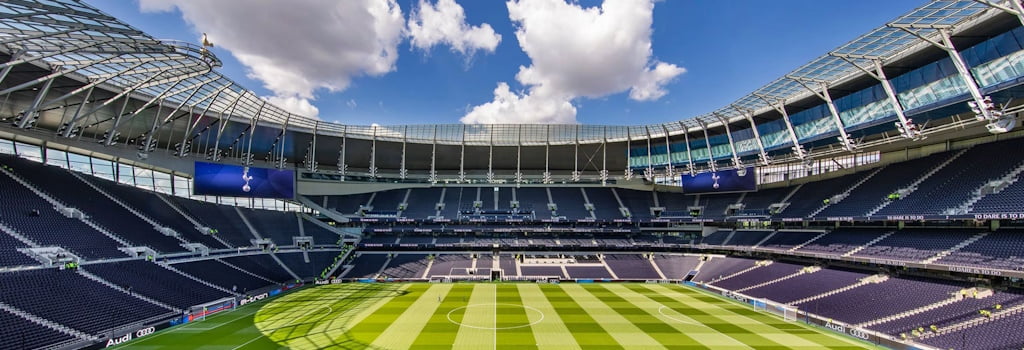

As the world of sports enters a new era, football stadiums stand at the intersection of tradition and innovation. Once mere venues for athletic competition, these spaces are evolving into dynamic environments that prioritize fan engagement, technological integration, and sustainable practices. With advancements in digital technology and a growing emphasis on enhancing the spectator experience, the future of football stadiums promises to revolutionize how fans interact with their favorite teams and the game itself.
Imagine stepping into a stadium where every seat offers a premium view, where information about players and statistics is just a tap away, and where the atmosphere pulsates with augmented reality experiences. As clubs and architects embrace cutting-edge technologies, the modern stadium is becoming a multifaceted entertainment hub, reimagining the boundaries of live sports. This transformation is not only about improving what happens on the field but also about creating an inclusive, engaging, and memorable experience for everyone in attendance.
In this article, we will explore the exciting innovations that are shaping the future of football stadiums, from smart technologies and enhanced viewing experiences to sustainable practices and community integration. As we delve into these developments, it becomes clear that the stadiums of tomorrow will redefine the very essence of what it means to be a fan of the world�s most popular sport.
Smart stadiums are becoming a standard in the industry, incorporating a range of technologies to improve efficiency and enhance the fan experience. These venues are equipped with high-speed Wi-Fi, mobile app integrations, and IoT (Internet of Things) devices that allow for seamless interaction between the stadium and its visitors.
Mobile apps are a staple of modern society and stadium designers have made sure to allow their use in their facilities. Fans can use dedicated apps to access real-time information about the game, including player stats, in-game highlights, and even crypto sports betting options, all from their stadium seat. These apps can also facilitate mobile food and beverage orders, reducing wait times and enhancing convenience.
Smart lighting and temperature control systems optimize the stadium environment, adjusting according to crowd density and weather conditions. This not only enhances comfort but also promotes energy efficiency.
One of the biggest changes in stadiums is the way fans consume the game itself. Traditional viewing experiences are being augmented with technology that brings fans closer to the action, regardless of their seat location.
Augmented Reality (AR) technology allows fans to overlay digital content onto the live game. For instance, they could point their smartphones at the field to view player statistics or replays from different angles. This interactive layer makes the experience more immersive.
Advanced video technology provides fans with the opportunity to experience the game from various perspectives. This might include viewing the game from the sidelines or experiencing behind-the-scenes moments through virtual tours.
As environmental concerns rise, stadiums are increasingly adopting sustainable practices. These initiatives not only appeal to eco-conscious fans but also contribute to the long-term viability of the venues.
Many new stadiums are designed with sustainability in mind, incorporating solar panels, rainwater harvesting systems, and energy-efficient materials. These features reduce the carbon footprint and operational costs. One of the best examples of this is Kaohsiung World Stadium in Taiwan. The stadium is almost completely built from sustainable materials and has 9,000 photovoltaic panels covering its 55,000-capacity grandstands.
Football stadiums are no longer just venues for games; they are evolving into community hubs that foster social connections and cultural engagement. This transformation enhances the overall fan experience.
Many modern stadiums are designed to host a variety of events beyond football games, including concerts, festivals, and community gatherings. This versatility helps to keep the stadiums active year-round. Tottenham Hotspur Stadium is praised as one of the best multi-use facilities in the world. The stadium is equipped with a multi-functional floor that allows it to host not only football games, but NFL ones as well, in addition to boxing matches, music concerts, and a myriad of other sports. Perhaps the most impressive is F1 Drive, the official F1 karting experience.
The future of football stadiums also prioritizes accessibility and safety for all fans. This commitment ensures that everyone can enjoy the game without barriers.
Advances in inclusive design allow new stadiums to be built to accommodate fans with disabilities. This includes accessible seating, improved signage, and facilities that cater to diverse needs.
Special care is taken to incorporate new health and safety technologies. With heightened awareness of health and safety, stadiums are integrating technologies like contactless entry systems and thermal imaging to monitor temperatures at entry points. These measures provide peace of mind to attendees.
The future of football stadiums is bright, driven by technological advancements and a deep commitment to enhancing the fan experience. As these venues continue to innovate, they will not only change the way fans watch and enjoy the game but also transform into community spaces that foster connection and sustainability. With each new development, the beautiful game becomes more accessible, immersive, and engaging for fans around the world. The stadiums of tomorrow promise to be not just places to watch football, but vibrant hubs of activity and excitement.
Taking my son to his first football match was one of the best experiences I've had as a father so far. I've written this article for Alex to read when he gets older.
An in-depth look at the biggest football attendances ever recorded, from the 1950 World Cup to pre-season friendlies in the States and the Scottish ground with dozens of 100,000+ attendances
All good things have to come to an end, and the same unfortunately has to be said for football stadiums too. This article looks at the grounds which are soon to host their last match, the stadiums whose days are numbered and where fans will be watching their football from next.
My daughter's first ever football match - Orlando City v Atlanta United, August 2019. Written for Izzy to read when she gets old enough. Vamos Orlando
